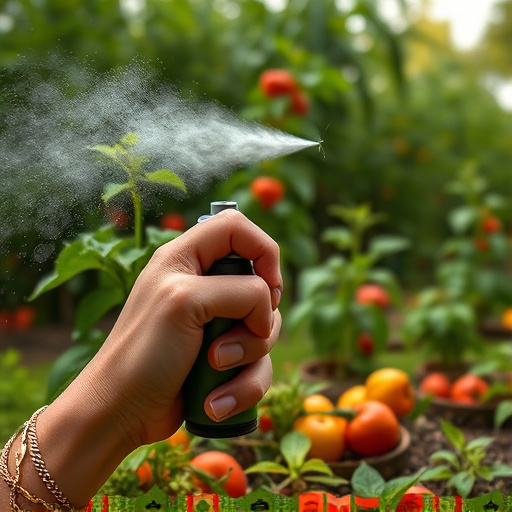Maintaining the best storage temperature for pepper spray between 50°F to 70°F (10°C to 21°C) is crucial for retaining its effectiveness and integrity. Law enforcement agencies must adhere to strict safety protocols, regulatory frameworks, and industry standards to ensure proper storage, deployment, and disposal of riot control agents, prioritizing public safety and officer well-being.
Riot control agents, including pepper spray, play a significant role in law enforcement, offering a crucial tool for managing crowds and maintaining public safety. This article delves into the world of these powerful tools, exploring various types, their effects on individuals, and the importance of safe handling. We also uncover regulatory frameworks that govern their use, emphasizing legal considerations and best practices. Additionally, discover the ideal best storage temperature for pepper spray to ensure its effectiveness and safety.
- Understanding Riot Control Agents: Types and Effects
- Safe Handling and Storage Practices for Officers
- Regulatory Frameworks: Legal Considerations and Best Practices
Understanding Riot Control Agents: Types and Effects
Riot control agents, often referred to as pepper spray, are chemical substances designed to disrupt and disperse crowds during law enforcement operations. These agents belong to a class of irritants that cause temporary physical discomfort, enabling officers to regain control in chaotic situations. Understanding the types and effects of these substances is crucial for both law enforcement agencies and individuals seeking effective self-defense solutions.
Pepper spray, a popular riot control agent, consists of oleoresin capsicum (OC) extracted from chili peppers. It’s recommended to store pepper spray at temperatures between 50°F and 70°F (10°C to 21°C) for optimal performance and shelf life. Improper storage conditions can lead to reduced effectiveness due to chemical degradation, making the best storage temperature for pepper spray a critical factor in maintaining its integrity as a law enforcement tool.
Safe Handling and Storage Practices for Officers
Officers responsible for handling and storing riot control agents, such as pepper spray, must adhere to strict safety protocols to ensure both their well-being and the effectiveness of the equipment. One of the critical aspects is maintaining the appropriate storage temperature. The best storage temperature for pepper spray is typically between 50°F to 70°F (10°C to 21°C). Exposing these agents to extreme heat or cold can cause them to lose potency, rendering them less effective during operations.
Proper storage involves keeping the chemicals in a secure, designated area, away from direct sunlight and excessive moisture. Officers should also ensure that the storage location is limited access, with only authorized personnel capable of retrieving the equipment. Regular inventory checks are essential to track usage and identify any potential spoilage or damage, ensuring the availability of fully functional riot control agents when needed.
Regulatory Frameworks: Legal Considerations and Best Practices
Law enforcement agencies must adhere to strict regulatory frameworks when employing riot control agents, including pepper spray. These regulations cover various aspects, from procurement and storage to deployment and disposal. Ensuring compliance is not just a legal requirement but also a best practice for maintaining public safety and officer well-being.
One critical consideration is the best storage temperature for pepper spray. According to industry standards, these agents should be stored in cool, dry places, typically between 50°F and 70°F (10°C to 21°C). This temperature range helps maintain the effectiveness of the spray, ensuring optimal performance when needed. Proper storage also includes secure containment to prevent unauthorized access and accidental discharge.
Riot control agents play a significant role in law enforcement, offering a means to manage and disperse crowds during chaotic situations. However, their safe handling and responsible deployment are paramount. By understanding the various types of agents, their effects, and implementing best practices for storage and use—such as maintaining the ideal best storage temperature for pepper spray—law enforcement agencies can ensure officer safety while mitigating potential harm to civilians. Additionally, adhering to regulatory frameworks and legal considerations is essential to uphold public trust and maintain a balanced approach to crowd control.
